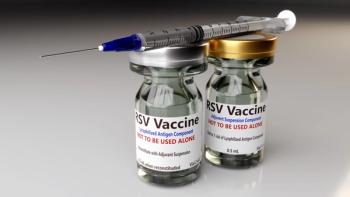
- February 2011 Infectious Disease
- Volume 77
- Issue 2
Trimethoprim and Potassium-Sparing Drugs: A Risk for Hyperkalemia
Pharmacists should closely monitor patients who take trimethoprim and other drugs that increase serum potassium.
Pharmacists should closely monitor patients who take trimethoprim and other drugs that increase serum potassium.
Trimethoprim-Induced Hyperkalemia
Trimethoprim (TMP)—sulfamethoxazole (eg, Bactrim, Septra) is a commonly used antibiotic combination. Its best known potential drug interactions involve the ability of sulfamethoxazole to inhibit the metabolism of cytochrome P450 2C9 substrates, such as warfarin or oral hypoglycemic agents.
The TMP component has several unique properties that can lead to drug interactions. One of these properties is its ability to function like amiloride in the distal portion of the renal tubule. TMP inhibits the uptake of sodium by the epithelial cell sodium channels in the distal tubule. This prevents the reabsorption of sodium from the urine but also alters the electrical balance of the tubular cell. As a result, the epithelial cell reduces the amount of potassium transported from the cell into the tubular lumen and thus into the urine. The result is a reduction in the amount of potassium excreted in the urine and an accumulation of serum potassium.1
The first reports of hyperkalemia with TMP occurred in patients being treated for Pneumocystis carinii, for which large doses of TMP are typically used.2 Most patients who receive TMP will have a modest increase in potassium during the first 5 to 7 days of treatment.3 Because there are a number of other drugs that also may increase serum potassium, the risk of TMP-induced hyperkalemia increases with concurrent drug use.
TMP Plus ACEIs or ARBs
The concurrent administration of other drugs that can increase serum potassium can lead to a large increase in potassium concentrations. In a nested, case-control study of patients older than 66 years who were taking angiotensin converting enzyme inhibitors (ACEIs) or angiotensin receptor blockers (ARBs), the risk of hospital admission for hyperkalemia within 14 days of taking TMP, amoxicillin, ciprofloxacin, norfloxacin, or nitrofurantoin was compared. Patients taking TMP—sulfamethoxazole had nearly a 7-fold increase in hospitalizations for hyperkalemia compared with patients taking amoxicillin.4 None of the other antibiotics studied increased the risk of hyperkalemia. The use of double-strength TMP (160 mg) was associated with a higher risk of hyperkalemia than the single-strength formulation.5
Patients with Multiple Risk Factors
Potassium-sparing diuretics that can increase serum potassium concentrations include spironolactone, eplerenone, amiloride, and triamterene. These drugs may interact with TMP and increase the risk of patients developing hyperkalemia. It is known that combinations of potassium- sparing diuretics and ACEIs (eg, enalapril, benazepril, fosinopril, lisinopril) or ARBs (eg, candesartan, losartan, valsartan) can also produce hyperkalemia.6 Thus, combinations of TMP, ACEIs, ARBs, and potassium-sparing diuretics may produce an additive risk of hyperkalemia. Other risk factors for the development of hyperkalemia include renal dysfunction, diabetes, advanced age, and the use of salt substitutes containing potassium chloride or nonsteroidal anti-inflammatory drugs.
Some patients may have several of these risk factors and take multiple interacting drugs. For example, a patient with diabetes may have reduced renal function and take an ACEI or ARB for hypertension plus a potassium-sparing diuretic/ thiazide combination. If this patient develops a urinary tract infection, TMP—sulfamethoxazole may be initiated. The additive effects of these hyperkalemia risk factors may be enough to produce symptomatic hyperkalemia. The selection of an alternate antibiotic or the lowest effective dose of TMP should be considered in this case.
Muscle weakness or bradycardia may be early signs of hyperkalemia, but monitoring the serum potassium concentration is the preferred approach to prevent serious cardiac events. Early monitoring becomes more critical in patients with multiple risk factors, both pharmacologic and physiologic, for the development of hyperkalemia.
Drs. Horn and Hansten are both professors of pharmacy at the University of Washington School of Pharmacy. For an electronic version of this article, including references, if any, visit www.hanstenandhorn.com.
References
1. Velazquez H, Perazella MA, Wright FS, Ellison DH. Renal mechanism of trimethoprim-induced hyperkalemia. Ann Intern Med. 1993;119:296-301.
2. Medina I, Mills J, Leoung G, et al. Oral therapy for Pneumocystis carinii pneumonia in the acquired immunodeficiency syndrome. A controlled trial of trimethoprim-sulfamethoxazole versus trimethoprim-dapsone. N Engl J Med. 1990;323:776-782.
3. Don BR. The effect of trimethoprim on potassium and uric acid metabolism in normal human subjects. Clin Nephrol. 2001;55:45-52.
4. Antoniou T, Gomes T, Juurlink DN, Loutfy MR, Glazier RH, Mamdani MM. Trimethoprim-sulfamethoxazole-induced hyperkalemia in patients receiving inhibitors of the renin-angiotensin system. Arch Intern Med. 2010;170:1045-1049.
5. Weir MA, Juurlink DN, Gomes T, et al. Beta-blockers, trimethoprim-sulfamethoxazole, and the risk of hyperkalemia requiring hospitalization in the elderly: a nested case-control study. Clin J Am Soc Nephrol. 2010;5:1544-1551.
6. Wrenger E, Müller R, Moesenthin M, Welte T, Frölich JC, Neumann KH. Interaction of spironolactone with ACE inhibitors or angiotensin receptor blockers: analysis of 44 cases. BMJ. 2003;327:147-149.
Articles in this issue
over 14 years ago
OTC Product Newsover 14 years ago
News & Trendsover 14 years ago
Let's Not Treat Immunizations as a Commodityover 14 years ago
Can You Read These Rxs?over 14 years ago
News & Views Outlook: Obesityover 14 years ago
Case Studies: Test Your Skillsover 14 years ago
RESPy Award: Leading the Charge for Collaborative Careover 14 years ago
Diabetes Watchover 14 years ago
Infectious Diseases WatchNewsletter
Stay informed on drug updates, treatment guidelines, and pharmacy practice trends—subscribe to Pharmacy Times for weekly clinical insights.














































































































































































































